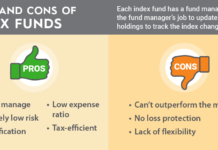When people talk of income, either from providing services, selling products, or their investments, they rarely think of the different income types. When we think of the different types of income, it’s quite common for one to get confused.
First, there are two types of income, disposable and discretionary income. These are terms we are sure you’ve heard of or read in finance or economic updates. While these two types of income are used in analyzing consumers’ spending habits and gauge how healthy an economy is, they are different measures with different meanings.
It’s important to differentiate these incomes because how much money you make is not necessarily the amount of money that ends up in your wallet. You might negotiate for a $200,000.00 income, but you end up with a net pay of $130,000.00. Furthermore, you could easily end up with about $30,000.00 by the time you are done meeting all your monthly expenses.
What is Disposable Income?
Disposable income or disposable personal income (DPI) is the total personal income minus the current taxes. In simple terms, it’s the amount of money you have left to spend or save after paying income taxes. Countries monitor disposable income to analyze their economy’s state.
If you receive a paycheck at the end of the month, your disposable income is your net income, assuming tax is the only deduction you have. For example, if your gross salary is $200,000.00 and the income tax for the month is $50,000.00, your disposable income is $150,000.00 ($200,000.00 – $50,000.00).
What is Discretionary Income?
Discretionary income, on the other hand, factors more than just your income tax deductions. It’s the amount of money you have left after income tax deductions and payment of other personal essentials like shelter, food, clothing, and transport.
The money that you are left with to cater to your vacation, entertainment, or recreational needs, represents your discretionary income.
The confusion arises from the fact that discretionary income is derived from disposable income. It’s important to note that disposable income does not take your expenses on necessities into account.
So, from our earlier example, after income tax deduction, you are left with a disposable income of $150,000.00. Your necessities include rent of $30,000.00, food expenses of $10,000.00, transport of $5,000.00, clothing expenses of $5,000.00 and bills of $10,000.00. From this, you can calculate your discretionary leaving you with $90,000.00.
$150,000.00 – $30,000.00 – $10,000.00 – $5,000.00 – $5,000.00 – $10,000.00 = $90,000.00
Your disposable income will always be higher than your discretionary income.
Wants vs. Needs
Unfortunately, many people are still not able to differentiate between their wants and needs. If you’re aiming to achieve a healthy financial position, recognizing your wants and needs is an excellent step. Why? Because your discretionary income is what you have left for saving and investing.
Your needs are essentials or the basics items you need to survive, like rent and food. However, buying your daily meals from a restaurant rather than cooking at home is not a need but a want. Yes, food is a necessity but taking $250.00 out of your discretionary income to buy food rather than spending $100.00 on groceries for a homemade meal robs you of an opportunity to save, invest or use that $150.00 on something else that’s more important.










![How To Be A Minimalist [Idy On Fire]](https://investitin.com/wp-content/uploads/2019/01/592-Arctcle-100x70.jpg)

